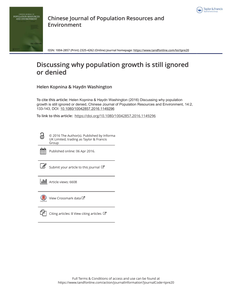Het grootste deel van de kunstmatig veroorzaakte, gemiddelde stralingsbelasting in Nederland is afkomstig van medische blootstellingen. In opdracht van het Ministerie van Volksgezondheid, Welzijn en Sport (VWS) en de Inspectie voor de Volksgezondheid (IGZ) verricht het Rijksinstituut voor Volksgezondheid en Milieu (RIVM) onderzoek naar Medische Stralingstoepassingen in Nederland. In publicaties worden gegevens over aard en omvang van medische stralingsblootstelling bijeengebracht. Deze gegevens worden onder andere gepubliceerd op de website van het RIVM onder Medische Stralingstoepassingen (www.rivm.nl/ims).
DOCUMENT

Door bevolkingsgroei, economische ontwikkeling en verstedelijking is er in de komende jaren een groeiende behoefte aan nieuwe woningen, kantoren en infrastructuur en moet er geïnvesteerd worden in de vervanging van bestaande bouw en infrastructuur. Deze bouwopgave zal leiden tot meer bouwverkeer en kan botsen met andere uitdagingen rond bereikbaarheid, duurzaamheid en- leefbaarheid, zeker in stedelijk gebied.
DOCUMENT
In Nederland nemen regionale verschillen in bevolkingsontwikkeling toe. De Randstad heeft te maken met bevolkingsgroei en dat zal naar verwachting de komende decennia ook zo blijven. De minder stedelijke en meer perifeer gelegen gebieden hebben in toenemende mate te kampen met bevolkingsstagnatie of -afname. In dit Randland wordt gezocht naar manieren om de zogenaamde ‘de-growth’ vorm te geven. Niet groei maar een constructieve omgang met krimp staat centraal in toekomstgerichte ontwikkelingsscenario’s.
DOCUMENT

De verwachte groei van de wereldbevolking zal ook leiden tot een toename van de textielconsumptie. Deze overtreft de verwachte procentuele groei van de bevolking als gevolg van de tegelijkertijd stijgende consumptie per capita. De stijging van de consumptie van textiel tot het jaar 2050 zal tussen de 50 en 100 procent bedragen. Daarvan wordt 20 tot 30 procent veroorzaakt door de bevolkingsgroei, de rest volgt uit de groei van de welvaart. Artikel in Texpress, waarin ook de ontwikkeling van geregenereerde cellulose, SaXcell, door Saxion wordt beschreven.
MULTIFILE

Some researchers insist that sustainability should be represented as a continuous quest, doubting that there is the ‘right’ way to be sustainable. Acknowledging the immensity of sustainability challenges, this article takes a different perspective, arguing that without understanding of concrete barriers and seeking solutions, the challenge of addressing unsustainable practices becomes unsurmountable. This article will summarize research in sustainability literature that indicates that sustainability requires a constant human population, as well as ecologically benign method of production. This article will survey a number of helpful frameworks that address the key obstacles to sustainability, namely population growth, and unsustainable production and consumption. These frameworks are discussed in the context of business-level solutions and production systems. As illustrated by examples of best practices as well as potential pitfalls associated with each system, these systems have the potential to move the quest for sustainability beyond ‘business as usual.’ https://doi.org/10.1007/s10668-015-9723-1 LinkedIn: https://www.linkedin.com/in/helenkopnina/
MULTIFILE

Eerder gepubliceerd in Land & Water, nr. 12, 2017 Verstedelijking is een wereldwijde trend. De VN voorspellen dat in 2050 bijna tweederde van de wereldbevolking in steden woont. Ook in Nederland neemt de verstedelijking toe, met onder meer een toenemende druk op de Randstad. Ondergrondse oplossingen voor bovengrondse problemen zijn noodzakelijk. Om bevolkingsgroei in steden te faciliteren, zijn ondergrondse oplossingen nodig Naar verwachting leeft in 2050 twee derde van de wereldbevoling in steden Gedacht kan worden aan ondergrondse tramtunnels en parkeerplaatsen. Ondergronds moet worden ingebed in stedelijke gebiedsontwikkelingsprocessen.
MULTIFILE

Recensie van het boek ‘De nieuwe groei heet krimp : een perspectief voor Parkstad Limburg’ van J. Latten en S. Musterd (red.)
DOCUMENT

Life on the Brink is an unusual volume in that it allows non-‐academic, activist voices as well as politicians, environmental studies scholars, and social scientists to participate in the argument that concerns us all, the argument about the future of our planet and of humanity. The common thread running through the essays of two dozen nature writers and activists hailing from a range of disciplines and offering varied perspectives is their shared concern about population growth. All contributors see population growth as a major force behind our most serious ecological problems, including global climate change, habitat loss and species extinctions, air and water pollution, and food and water scarcity. Despite the differences in perspectives, all contributors argue that ending population growth worldwide is a moral imperative that deserves renewed commitment. https://www.linkedin.com/in/helenkopnina/
DOCUMENT

Eerder gepubliceerd in ROMagazine, nr. 6, 2016 De ondergrond kan bijdragen aan belangrijke maatschappelijke opgaven, zoals klimaatveranderingen, energietransitie, verstedelijking en digitalisering. Zo vragen hevigere regenbuien om voorzieningen om piekafvoeren van water op te vangen. De ondergrond speelt een belangrijke rol in de energietransitie, zosls voor de winning van geothermie als het realiseren van warmte-koudeopslagsystemen. Door bevolkingsgroei, de trek naar de stad, welvaart en milieubewustzijn neemt de ruimtedruk in de komende drie tot vier decennia toe. De onergrond biedt voor deze verstedelijkingsvragen extra ruimte en kwaliteit. Verder vraagt de toenemende digitalisering om steeds meer en betere glasvezelnetwerken. Netwerken die vooral ondergronds hun plek krijgen.
MULTIFILE

Due to a number of factors outlined in this article, the issue of population growth is excluded from the sustainability discussion. In this article, we explore some of the ethical presumptions that underlie the issues linking population growth and sustainability. Critics argue that action to address population creates social and economic segregation, and portray overpopulation concerns as being “anti-poor,” “anti-developing country,” or even “antihuman.” Yet, de-linking demographic factors from sustainability concerns ignores significant global realities and trends, such as the ecological limits of the Earth, the welfare and long-term livelihood of the most vulnerable groups, future prospects of humanity, as well as the ecosystems that support society. https://doi.org/10.1080/10042857.2016.1149296 LinkedIn: https://www.linkedin.com/in/helenkopnina/
MULTIFILE
